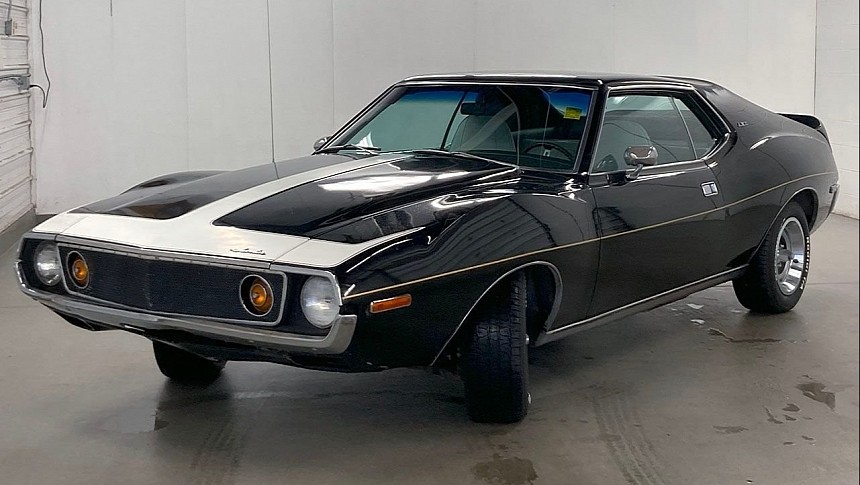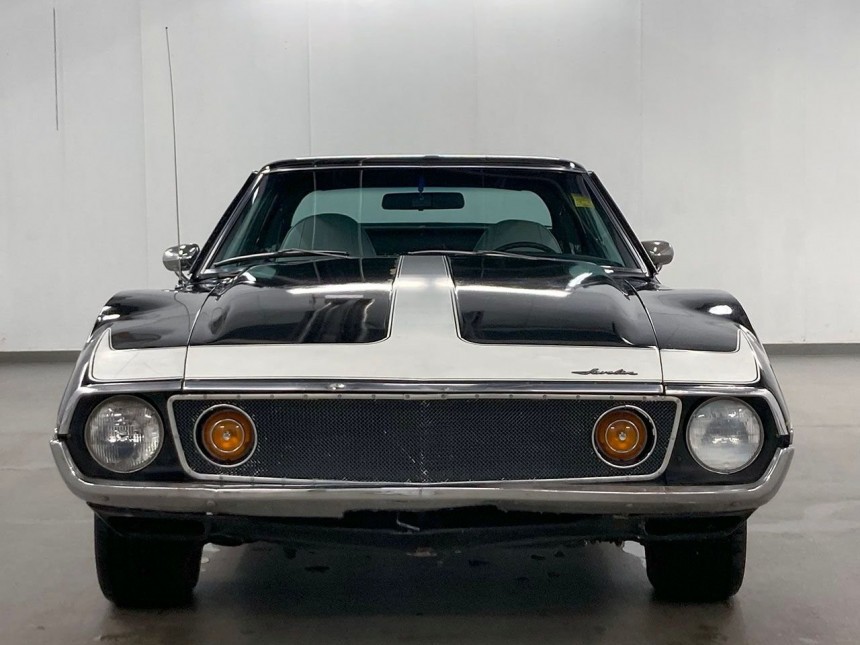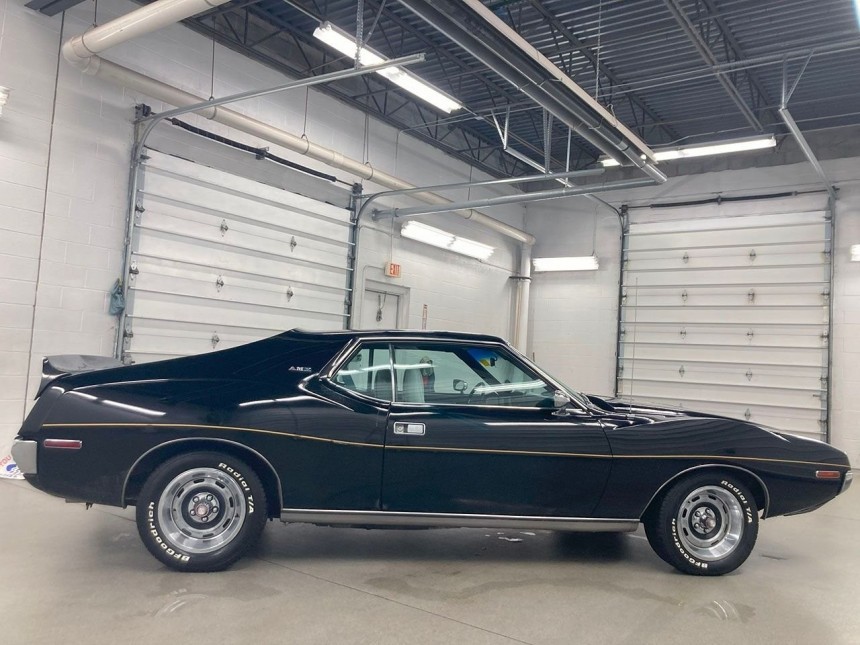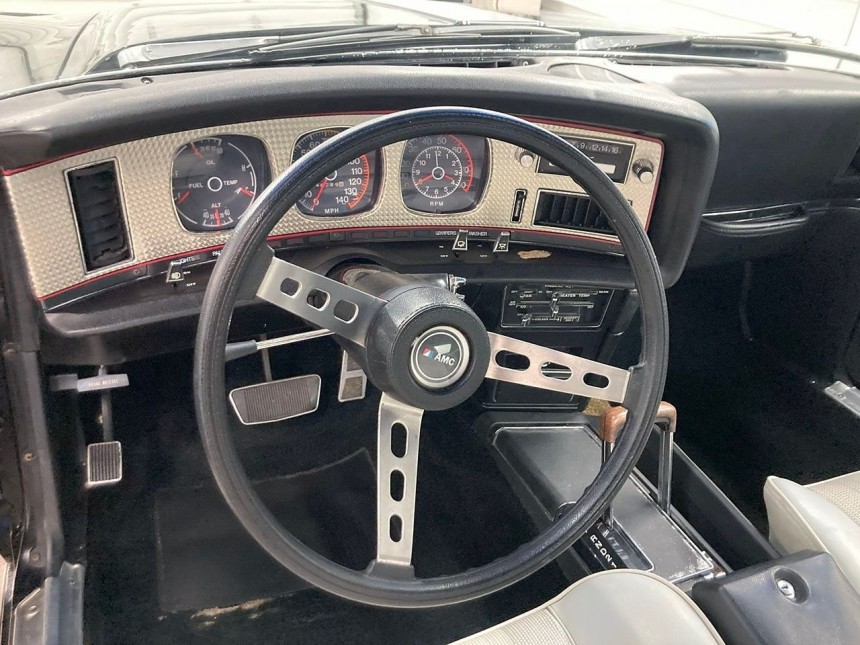In 1968, American Motors Corporation released two of its emblematic nameplates – the Javelin and the AMX (the latter, as a direct rival to the Corvette, was launched mid-model-year, at the end of February). In 1971, the two monikers mingled into one, with the AMX now demoted to a trim level of the Javelin. The last AMC Pony from the great era stepped out at its peak and left a nostalgic legacy with a solid fan base today.
The story of this independent pony car was cut short by the company’s lack of financial critical mass (that eventually pushed AMC off the edge of the car industry cliff altogether). The last Javelin thrown by the American Motors Corporation against the tyranny of the Big Three was gone together with two other Detroit icons – the Plymouth Barracuda and the first-generation Dodge Charger – at the end of 1974.
The Javelin wasn't doing bad for its last year on the market. In fact, AMC was doing great (by its independent carmaker standards), with almost 510,000 vehicles built for that model year. If we factor in the calendar year assembly, it still comes out at 431,798 – the company’s absolute best year for sales. Between its 1966 rebranding as American Motors Corporation and going all the way to its demise in 1987, 1974 is the historic highwater mark.
Curiously, the company decided to quit the Javelin. At the same time, it was still ahead – a decision dictated purely by strategic optimization of assembly line availability. The then-new AMC Pacer took the place left vacant by the Javelin, while a redesigned Matador with a two-door coupe body was delegated to carry on the pony car legacy.
The base Javelin was built in 22,556 examples, while the high-performing AMX variant saw just 4,980 copies put together. Now, 1974 is not fondly looked back at by gearheads since the Malaise Era was steaming up for its head-on assault on the ‘fun’ section of motoring.
The engine lineup was a six-choice palette for AMC prospects searching for a Javelin: two sixes (evidently, these were not offered for the AMX) and four V8s – three motors with two carburetion variants. All four eight-cylinder powerplants were installed in AMXs. A 304 cubic-inch (5.0-liter) with a single two-barrel carb sat at the low-end part of the power band.
The workhorse of the 1974 Javelin AMX was the famous AMC 360-cube V8 (5.9-liter), with either a two-throat or a four-Venturi gasoline-air mixer. Lastly, the equally renowned 401 V8 (6.6-liter) sat at the top of the range. However, with the early seventies dislodging significant changes in motoring, those three engines didn’t have the same appeal as they did in their heyday.
The big 401 was rated at 235 hp (238 PS) and 335 lb-ft (454 Nm) – per the 1972 Society of Automotive Engineers assessment standards. Only 217 Javelin AMX units came with the company’s most powerful V8. The bulk of production was carried on the shoulders of the 360 V8 pair. 2,320 AMC pony cars had the respected option installed, some five hundred more than the standard 304-equipped Javelin AMXs (1,884).
The 360 delivered 175 or 220 hp (177 or 223 PS), depending upon the carburetion, and 285 or 315 lb-ft (386 Nm / 427 Nm), with the 8.25:1 compression allowing the use of regular, low-leaded or unleaded gasoline. The highest-compression engine was the 304, with an 8.4:1 that allowed it to peak at 150 hp (152 PS) and 245 lb-ft (332 Nm).
Transmission-wise, three choices made the Javelins spin their rear tires: a three-on-the-floor manual, a three-speed Torque-Command automatic (with the shifter on the steering column or on the console), and a lively four-speed, three-pedal option, and a shift stick between the front passengers. Lastly, three rear axle ratios completed the package.
The 360s and 401s received the option of a 3.54 gearing and the regular 3.15 (depending on the type of transmission linked to the V8). At the same time, the 304-engined Javelins came with a numerically low 2.87 from the factory. Curiously, the smallest-displacing V8 offered an optional 3.15 alternative to the cruise-friendly 2.87 for the console-shifted automatic. However, the same engine only received the single-choice 3.15 differential when the lever was on the column. To make matters even more confusing, the three-speed manual was mated to a 3.54 rear, with no alternative.
The Javelin is a rarity nowadays, thanks to its relatively short production span and unique styling. Still, it doesn’t have the same collectors-appealing aura as other great classics of the era. For example, an original survivor in perfect working condition from 1974 will likely sell for two grand. By comparison, a same-year unmolested Dodge Charger will easily claim over twice the price.
Take this black Javelin AMX as a yardstick – it has 46,300 miles (74,500 km), a 360 cubic-inch V8 with the more enticing four-barrel carburetor, and dual exhaust. The seller states that an aftermarket tach and engine gauge package have been installed (but the instruments cluster respects the original appearance).
If the announcement speaks the truth, we’re looking at a nice survivor who got the best in life (the car is half a century old; not in showroom condition, but remarkable in every aspect). It can benefit some refreshment – what original classic wouldn’t? – but it can be driven easily, without any issues (or so the selling dealer proclaims, in exchange for $21,000).
The Javelin wasn't doing bad for its last year on the market. In fact, AMC was doing great (by its independent carmaker standards), with almost 510,000 vehicles built for that model year. If we factor in the calendar year assembly, it still comes out at 431,798 – the company’s absolute best year for sales. Between its 1966 rebranding as American Motors Corporation and going all the way to its demise in 1987, 1974 is the historic highwater mark.
Curiously, the company decided to quit the Javelin. At the same time, it was still ahead – a decision dictated purely by strategic optimization of assembly line availability. The then-new AMC Pacer took the place left vacant by the Javelin, while a redesigned Matador with a two-door coupe body was delegated to carry on the pony car legacy.
The engine lineup was a six-choice palette for AMC prospects searching for a Javelin: two sixes (evidently, these were not offered for the AMX) and four V8s – three motors with two carburetion variants. All four eight-cylinder powerplants were installed in AMXs. A 304 cubic-inch (5.0-liter) with a single two-barrel carb sat at the low-end part of the power band.
The workhorse of the 1974 Javelin AMX was the famous AMC 360-cube V8 (5.9-liter), with either a two-throat or a four-Venturi gasoline-air mixer. Lastly, the equally renowned 401 V8 (6.6-liter) sat at the top of the range. However, with the early seventies dislodging significant changes in motoring, those three engines didn’t have the same appeal as they did in their heyday.
The 360 delivered 175 or 220 hp (177 or 223 PS), depending upon the carburetion, and 285 or 315 lb-ft (386 Nm / 427 Nm), with the 8.25:1 compression allowing the use of regular, low-leaded or unleaded gasoline. The highest-compression engine was the 304, with an 8.4:1 that allowed it to peak at 150 hp (152 PS) and 245 lb-ft (332 Nm).
Transmission-wise, three choices made the Javelins spin their rear tires: a three-on-the-floor manual, a three-speed Torque-Command automatic (with the shifter on the steering column or on the console), and a lively four-speed, three-pedal option, and a shift stick between the front passengers. Lastly, three rear axle ratios completed the package.
The Javelin is a rarity nowadays, thanks to its relatively short production span and unique styling. Still, it doesn’t have the same collectors-appealing aura as other great classics of the era. For example, an original survivor in perfect working condition from 1974 will likely sell for two grand. By comparison, a same-year unmolested Dodge Charger will easily claim over twice the price.
Take this black Javelin AMX as a yardstick – it has 46,300 miles (74,500 km), a 360 cubic-inch V8 with the more enticing four-barrel carburetor, and dual exhaust. The seller states that an aftermarket tach and engine gauge package have been installed (but the instruments cluster respects the original appearance).
If the announcement speaks the truth, we’re looking at a nice survivor who got the best in life (the car is half a century old; not in showroom condition, but remarkable in every aspect). It can benefit some refreshment – what original classic wouldn’t? – but it can be driven easily, without any issues (or so the selling dealer proclaims, in exchange for $21,000).











































